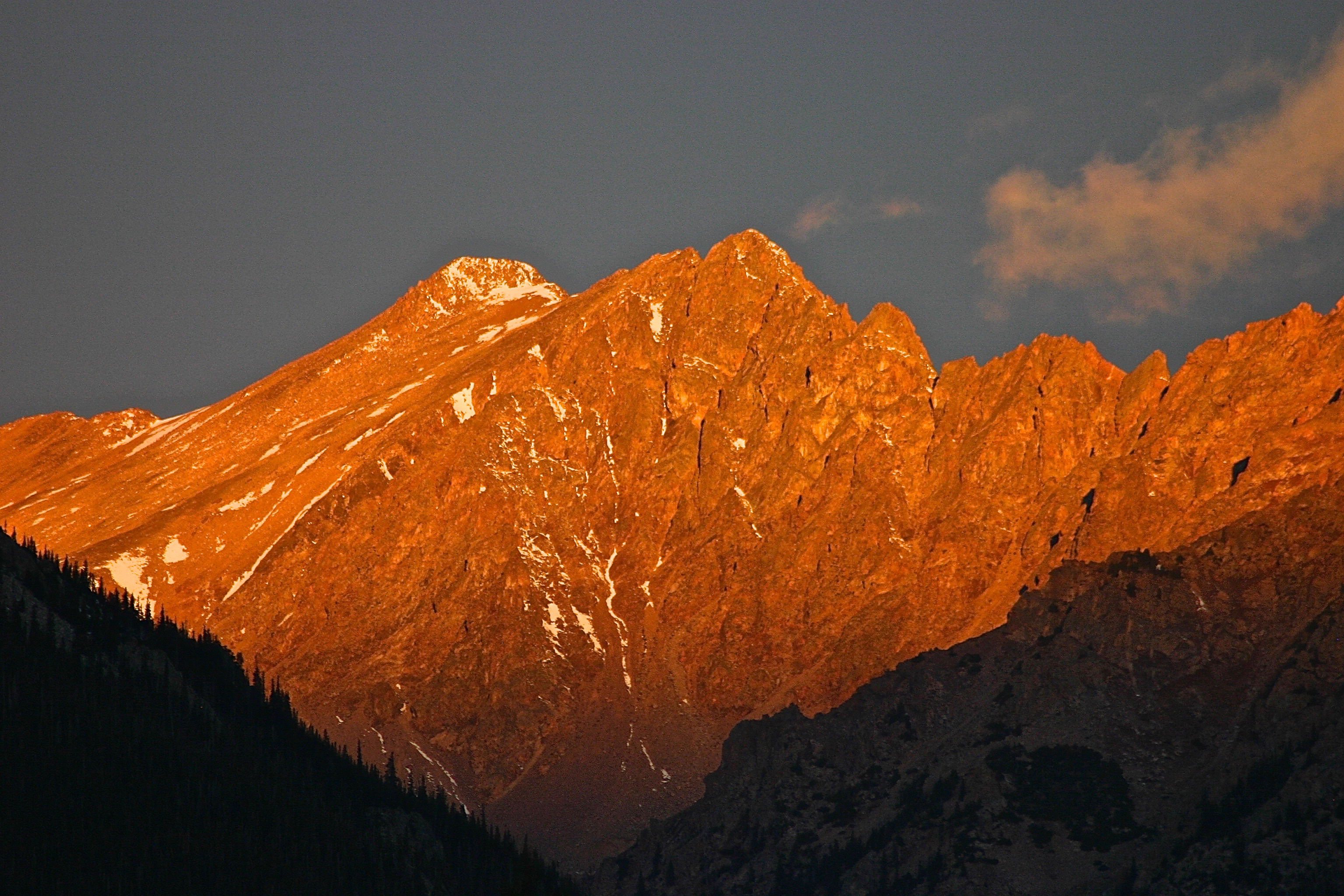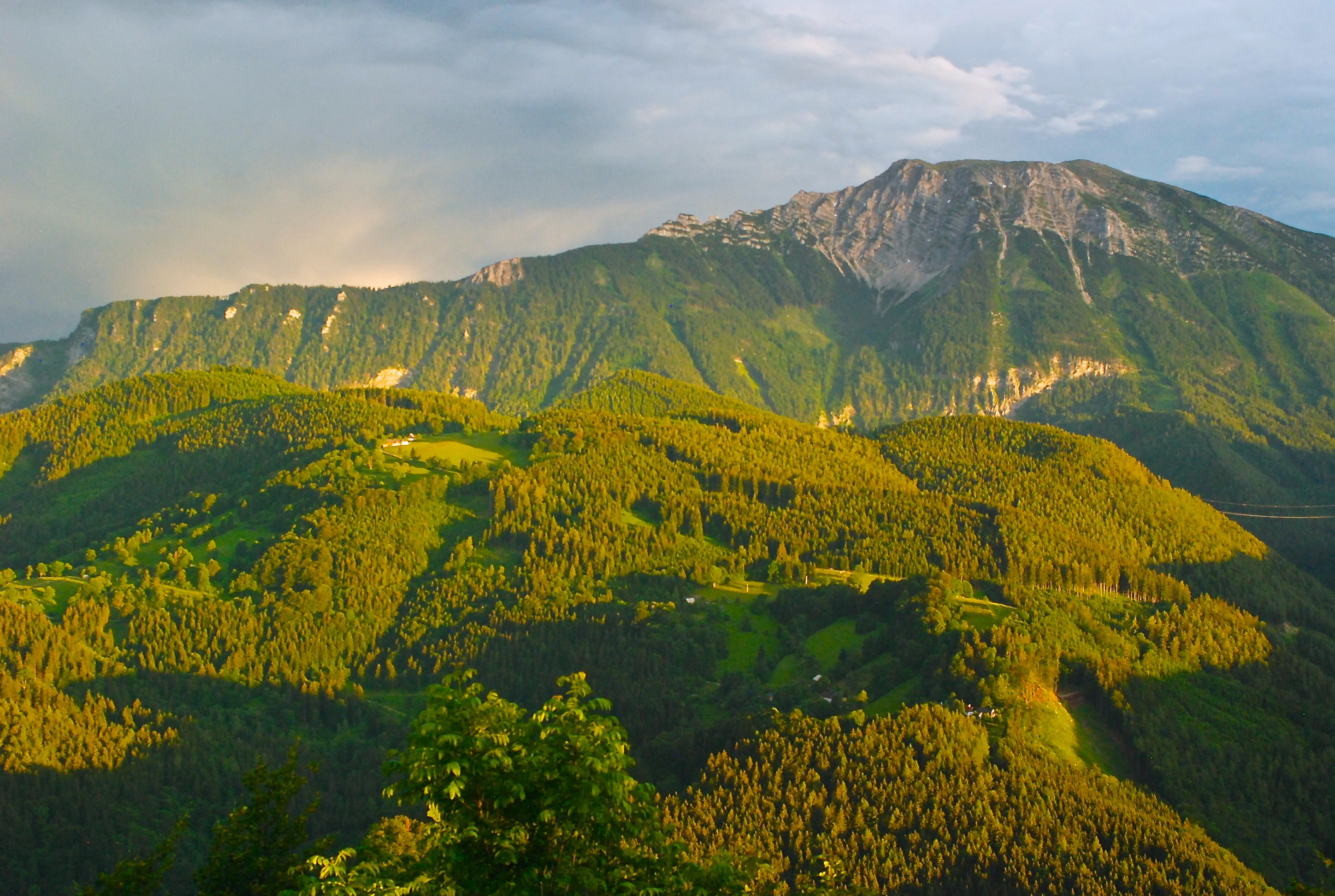As the 20th century ended, there were still quite a few mountain men in Austria—guides, farmers, and the like—who were not at all convinced that humans were causing the planet to warm. Theirs wasn’t a cynical ideological skepticism, but rather a pragmatic view of the world based on a close connection to the rhythm of nature in the mountains.
The mountains have always changed, they would tell you over a mug of beer and a shot of pungent schnapps brewed from the roots of mountain herbs. We are small, nature is great, they would say, nodding in respect toward the lofty crags of the Alps.
But 2012 marked a turning point. During a brutal summer heat wave, the summit cross on the 3,660-meter Grossvenediger threatened to topple over. Relentless heat thawed the permafrost that had held the giant marker steady for decades.
By the end of that summer there were few, if any, doubters remaining. Even the most grizzled old-timers started acknowledging that a steady build-up of greenhouse gas pollution was visibly reshaping their world within the span of a human life. Forests are moving uphill, glaciers are vanishing, and plants are blooming several weeks earlier than just 30 years ago.
Above 4,000 meters in elevation, the rate of warming has increased by an astounding 75 percent in just the past 20 years, compared to areas below 2,000 meters.
Mountain temperatures are increasing more quickly than the global average, at a rate closer to that of the Arctic, and climate researchers are trying to figure out why. They suspect that the accelerated mountain warming is due to an effect documented in the Arctic—loss of albedo. The peaks are losing their shiny white blanket of snow and ice that reflects the sun’s radiation back to space. Instead, darker-colored ground absorbs heat, amplifying the heat-trapping effect of greenhouse gas pollution.
MORE RESEARCH NEEDED
But there’s not quite enough data yet to prove the conventional wisdom of rapid mountain warming, says University of Portsmouth geographer Nick Pepin, who led a 2015 study that tried to assess climate change impacts to mountains on a global scale. Are they really warming as fast as we think?
“I think the overall feeling on this is, probably they are, but we don’t know for sure,” he says. Temperature readings taken between 1,000 and 3,000 meters confirm the trend, but data is sparse from higher elevations. There are very few ground-based weather stations above 3,000 meters and none above 5,000 meters, Pepin says, advocating for an expansion of mountain climate research.
A late autumn storm lifts off the Rocky Mountains of Colorado. Some climate models suggest that there will be more extreme winter snowfall and rainfall in certain mountains, while others will be left high and dry, but the projections are uncertain because of data gaps. More high-altitude research is needed to help understand how global warming will affect the world’s highest elevations, because those impacts will be felt in the lowlands, where people rely on mountains for water supplies.
Sunset over the Hallstätter See in the Austrian Alps near Salzburg. Excavations near the lake show that people have lived here in relative harmony with the mountain environment since the late Bronze Age, more than 3,000 years ago. Now, climate change threatens the sustainability of mountain cultures in the region.
In recent years, melting permafrost near the summit of Austrian peaks has unleashed massive landslides that have rumbled much farther down into the valleys than expected. Mountain communities will need to carefully monitor changes on a regular basis and adopt flexible and adaptive governance to prepare for as-yet unexpected impacts.
Satellite data can be used to measure land-surface temperature, and it shows that higher elevations are warming more than areas lower down, but the satellites aren’t as accurate as ground-based readings. Direct observations are needed to validate the satellite data, Pepin says.
Without better information, people risk substantially underestimating the severity of many already-looming problems, including a proliferation of damaging landslides, water shortages in densely populated lowlands—especially in Asia—and the extinction of some mountain plants and animals.
Pepin’s recent study zoomed in on the Tibetan Plateau, which holds so much snow and ice that it’s sometimes called the Third Pole. Temperatures in the region have climbed steadily. Above 4,000 meters in elevation, the rate of warming has increased by an astounding 75 percent in just the past 20 years, compared to areas below 2,000 meters.
“If we’re right, the social and economic consequences could be serious, and we could see much more dramatic changes much sooner than previously thought,” Pepin says.
The Tibetan Plateau is the source of 10 of Asia’s biggest rivers, including the Ganges, Indus, and Mekong basins. These rivers provide water to more than 1.35 billion people, 20 percent of the world’s population. The melting glaciers foreshadow a major water supply crisis, and there’s also a more immediate danger; destabilized ice masses threaten mountain communities with avalanches, landslides, and floods.
A FUTURE WITH LESS WATER
Overall, about half the world’s population depends on mountains for drinking water supplies, irrigation, mining, hydropower, agriculture, and recreation—including many people who live far away from mountains and never stop to think how their fate is tied to what happens on those high summits.
A recent study published in the journal Earth’s Future tries to quantify some of the impacts on a global scale. The findings suggest that communities around the world need to prepare for a future with less water.

(Photo: Bob Berwyn)
Breaking the effects on water resources down by region, the scientists found that the volume of glacier ice will decline by 80 percent or more in the South American Andes and the European Alps, and by 60 percent or more in western Canada, Scandinavia, the Caucasus, and Southeast Asia.
In the densely populated European Alps, climate records go back more than 120 years and the decline of alpine glaciers is documented in painstaking detail. The Alps have warmed about two degrees Celsius in the past 100 years, with the biggest jump in the last three decades.
The new study’s scientists also documented an “unprecedented mass wasting related to permafrost degradation.” That means the frozen glue that has held the mountains together since the end of the last ice age is thawing, threatening climbing routes, mountain huts, and ski lifts. There’s also been a big increase in large landslides that cause millions of dollars’ worth of damage to roads, bridges, power lines, and other infrastructure.
In the Andes of Peru, rock and ice avalanches from steep slopes have affected lakes formed by melting glaciers, triggering catastrophic downstream floods and debris flows. At the same time, the shrinking glaciers cut water supplies for local and regional economies during the dry season.

(Photo: Bob Berwyn)
The only path to sustainability in the face of a warming climate is to prepare for rapid adaptation, based on continuing scientific monitoring. For example, continuing satellite images of landslide patterns can help decide where to build protective walls for highways or towns.
According to researchers, adapting to changes in river flows requires moving away from single-use management, where hydropower, drinking water, or irrigation projects have been conceived in isolation. A holistic approach would consider all those uses together, along with risk factors like melting glaciers.
Shifting to a new way of thinking will be the only way communities can offset the decreasing storage of water in snow and ice, and the associated disruptions of seasonal flow patterns.






